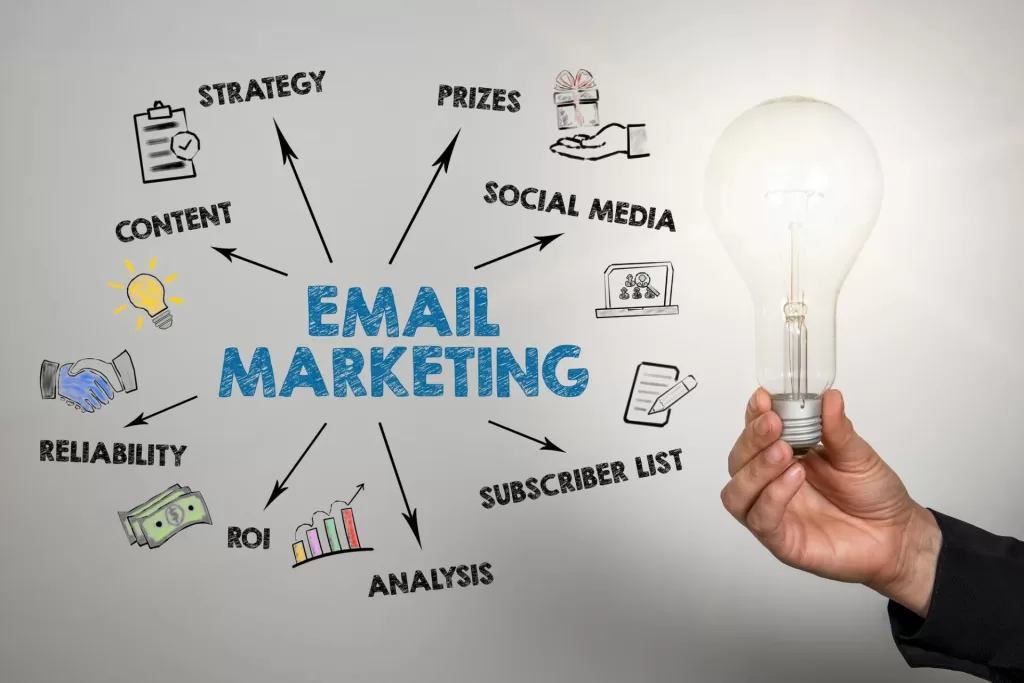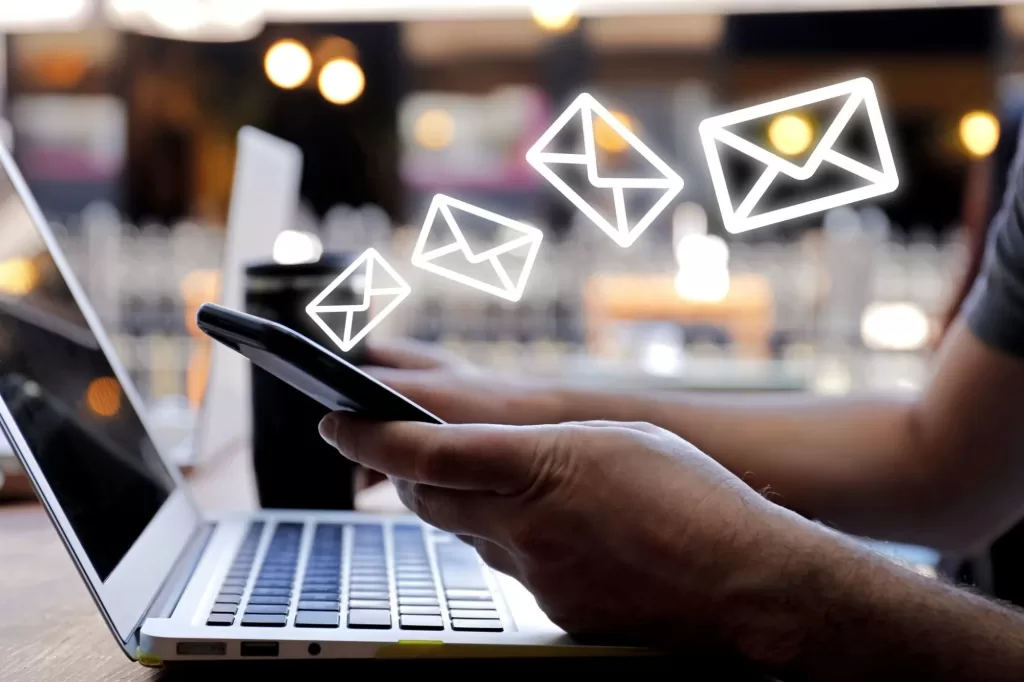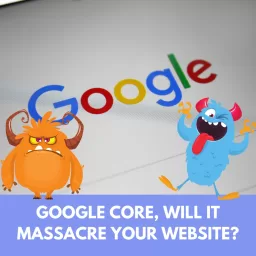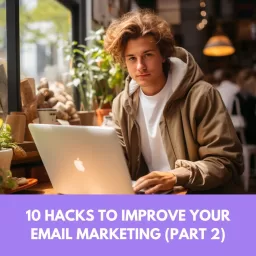Introduction
Welcome to our blog on 10 human behaviour hacks that will change the way you create email. In this blog, I will discuss practical and actionable tactics that can help increase your open, read, and response rates. These hacks are designed to work alongside your email best practices to optimize your email marketing efforts.
Before we dive into the hacks, it’s important to understand the concept of decision-making shortcuts. Humans have developed these automatic behaviours over time as a way to conserve mental energy. These shortcuts help us make decisions quickly without having to process every bit of information. As email marketers, it’s crucial to understand and leverage these decision-making shortcuts to our advantage.
Throughout this blog, we will cover various topics, including the power of words in subject lines, the importance of positioning your message for fast response, the influence of the consistency principle, the use of social proof to increase sales, the impact of incorporating negative aspects, the role of availability bias, how to make yourself stand out from the competition, the effectiveness of providing a reason why, the use of the five W’s and the 1H, and the benefits of leveraging holidays and special occasions in your email marketing strategy.
By the end of this blog, you will have a comprehensive understanding of these human behaviour hacks and how to apply them to your email marketing campaigns. So let’s get started and explore each hack in detail.

Words That Work Like Magic in Subject Lines
Choosing subject line words carefully is crucial in email marketing. Generic subject lines can easily be ignored or mistaken for spam. To attract attention and increase open rates, it’s important to use eye magnet words that capture the reader’s attention.
One powerful word to include in subject lines is ‘new’. The human brain craves novelty, and using the word ‘new’ in subject lines can activate the pleasure centre in our brains, making us more likely to open the email.
Another persuasive word to include is ‘free’. While it is used to trigger spam filters, studies have shown that using the word ‘free’ in subject lines can increase open rates by 10%. The word ‘free’ taps into our natural desire to get something without having to pay for it.
Incorporating the five W’s and the 1H (who, what, where, when, why, and how) is also an effective strategy. By answering these questions in the subject line, you create an information gap that the reader wants to fill, increasing their likelihood of opening the email.
Additionally, using numbers in subject lines can help attract attention and provide a sense of order and ease. Odd numbers are perceived as more credible, and multiples of 10 are familiar and cognitively fluent.
Finally, leveraging holidays and special occasions in subject lines can make your message stand out. People notice and remember things that are different, so piggybacking on a holiday or creating your own can increase open rates.
Overall, choosing the right words in subject lines can have a significant impact on email open rates. By using eye magnet words, providing a reason why, and leveraging holidays, you can improve the success of your email marketing campaigns. Remember to keep subject lines short and concise, and always test different strategies to see what resonates best with your audience.
Two Ways to Position Your Message for Fast Response
When it comes to email marketing, getting fast responses is crucial. The faster we can get our audience to respond to our emails, the better chance we have of achieving our marketing goals. There are two effective ways to position your message for fast response: utilising the scarcity principle and creating urgency with limited-time offers.
The scarcity principle is based on the idea that people value things more when they are scarce or exclusive. By creating a sense of scarcity in your email marketing campaigns, you can motivate your audience to respond quickly. One way to do this is by offering limited quantities of a product or service. For example, you can mention that only a certain number of spots are available for a webinar or that a product is only available for a limited time. This scarcity will make your audience feel like they need to act fast to secure the opportunity.
Another way to create urgency is by using limited-time offers. By setting a deadline for a special promotion or discount, you can encourage your audience to take immediate action. You can use phrases like “limited time offer” or “sale ends soon” to convey the urgency. Adding countdown clocks in your emails can also create a sense of urgency and make people feel like they need to act fast before the offer expires.
Exclusivity can also be a powerful motivator for fast response. By offering exclusive deals or benefits to a select group of people, you can make your audience feel special and privileged. This can be done by segmenting your email list and sending personalised offers to specific groups. People are more likely to respond quickly when they feel like they are part of an exclusive opportunity.
Using countdown clocks, limited availability, and exclusive offers are all effective ways to position your message for fast response. By leveraging the scarcity principle and creating a sense of urgency and exclusivity, you can motivate your audience to take immediate action. Remember to clearly communicate the limited time or limited availability and make sure to provide a reason why your audience should respond quickly. By implementing these strategies, you can increase your email response rates and achieve your marketing goals faster.

The Ripple Effect of the Consistency Principle
The consistency principle is a powerful psychological concept that can have a significant impact on human behaviour. It states that once someone makes a decision or takes a stand, they are more likely to remain consistent with that decision in future situations. As email marketers, we can leverage this principle to our advantage in order to increase response rates and drive action.
Getting a ‘yes’ once is the key to unlocking the ripple effect of the consistency principle. When someone agrees to a small request or takes a small action, they are more likely to say ‘yes’ to future requests or actions. This is because they want to remain consistent with their previous commitment. By starting small and gradually escalating our asks, we can gain larger commitments from our audience.
Companies often use the consistency principle in their email marketing strategies. For example, they may start by asking subscribers to sign up for a newsletter or download a free resource. Once subscribers have committed to these actions, companies can then ask them to make a purchase or join a loyalty programme. By leveraging previous commitments, companies can increase the likelihood of receiving a positive response.
Escalating asks is a technique commonly used to take advantage of the consistency principle. By starting with small requests and gradually increasing the level of commitment, companies can gain larger commitments from their audience. For example, a company may start by asking subscribers to sign a petition, then ask them to donate to a cause, and finally ask them to become monthly donors. Each request builds on the previous commitment, making it more likely for subscribers to say ‘yes’.
By understanding and utilising the consistency principle, companies can create a ripple effect that leads to increased response rates and engagement. It is important to start with small asks, leverage previous commitments, and gradually escalate requests. This strategy can be applied to various aspects of email marketing, from sign-ups to purchases, and can greatly improve the effectiveness of your campaigns.
Why You’ll Sell More Using Social Proof
Understanding the concept of social proof is key to increasing your sales through email marketing. Social proof is the idea that people look to others for guidance when making decisions. When potential customers see that others have had a positive experience with your product or service, they are more likely to trust your brand and make a purchase.
One effective way to use social proof in your emails is by including testimonials and customer reviews. By showcasing positive feedback from satisfied customers, you provide evidence that your product or service is valuable and trustworthy. This can help to build credibility and influence potential customers to take action.
Social proof can also be used to influence behaviour. For example, you can create a sense of urgency by showing how many people have already purchased a product or signed up for a service. By highlighting the popularity or limited availability of your offering, you can motivate potential customers to take action quickly.
There are many examples of companies successfully leveraging social proof to increase sales. For instance, Amazon includes customer reviews on their product pages, allowing shoppers to see what others think before making a purchase. Airbnb uses social proof by displaying reviews and ratings for each listing, helping potential guests feel confident in their decision to book a stay.
In conclusion, using social proof in your email marketing can significantly increase your sales. By understanding the concept of social proof, utilising testimonials and customer reviews, influencing behaviour, and learning from successful examples, you can leverage social proof to build trust and drive more sales for your business.

When Negative Can Deliver Positive Results
While we often focus on the positive aspects when marketing our products or services, sometimes a little negativity can actually drive better results. Negative messaging can tap into our innate psychological tendencies and motivate us to take action. Here are a few ways that negative messaging can deliver positive results:
- The power of loss aversion: Humans are twice as motivated to avoid pain and loss as they are to achieve pleasure and gain. By highlighting the negative consequences of not taking action, we can appeal to this innate aversion to loss and motivate people to act.
- Emphasising the negative consequences: When people understand the negative outcomes that can occur if they don’t take action, they are more likely to feel compelled to act. By clearly explaining the potential negative consequences, we can create a sense of urgency and drive action.
- Using fear of missing out (FOMO): People have a fear of missing out on opportunities, especially when they see others taking advantage of them. By highlighting the popularity, limited availability, or exclusivity of our offering, we can tap into people’s FOMO and encourage them to take action before it’s too late.
- Examples of negative messaging: Negative messaging can take many forms, such as pointing out the risks of not using your product or service, highlighting the potential problems or challenges your product solves, or discussing the consequences of not taking advantage of a limited-time offer.
- Balancing negative messaging with positive solutions: While negative messaging can be effective, it’s important to balance it with positive solutions. After highlighting the negative consequences, focus on the positive benefits and solutions that your product or service provides. This will help to alleviate any concerns or doubts and motivate people to take action.
So don’t be afraid to use a little negativity in your messaging. By tapping into people’s aversion to loss, fear of missing out, and desire for solutions, you can drive better results and motivate people to take action.
There’s 5
We’re splitting this into a two-parter as it’s quite a lot of content. Here’s the link to part 2.
Interested in seeing more of our guides, advice, and articles on marketing apprenticeships?
Then sign up for our monthly newsletter. We’ll send you all the information on our latest stuff and general updates as well. Sign up below!

















